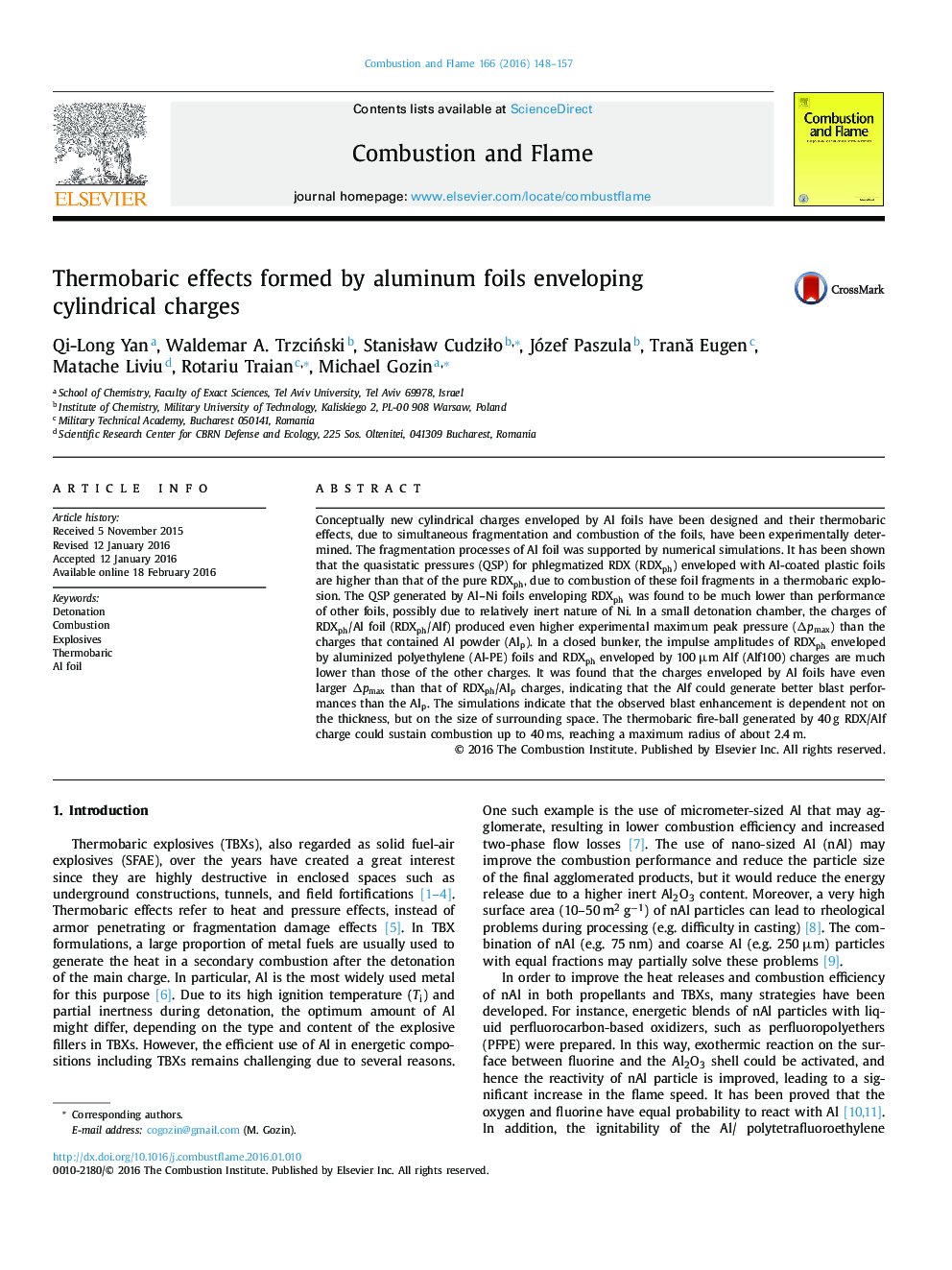| Article ID | Journal | Published Year | Pages | File Type |
|---|---|---|---|---|
| 168530 | Combustion and Flame | 2016 | 10 Pages |
Conceptually new cylindrical charges enveloped by Al foils have been designed and their thermobaric effects, due to simultaneous fragmentation and combustion of the foils, have been experimentally determined. The fragmentation processes of Al foil was supported by numerical simulations. It has been shown that the quasistatic pressures (QSP) for phlegmatized RDX (RDXph) enveloped with Al-coated plastic foils are higher than that of the pure RDXph, due to combustion of these foil fragments in a thermobaric explosion. The QSP generated by Al–Ni foils enveloping RDXph was found to be much lower than performance of other foils, possibly due to relatively inert nature of Ni. In a small detonation chamber, the charges of RDXph/Al foil (RDXph/Alf) produced even higher experimental maximum peak pressure (Δpmax) than the charges that contained Al powder (Alp). In a closed bunker, the impulse amplitudes of RDXph enveloped by aluminized polyethylene (Al-PE) foils and RDXph enveloped by 100 µm Alf (Alf100) charges are much lower than those of the other charges. It was found that the charges enveloped by Al foils have even larger Δpmax than that of RDXph/Alp charges, indicating that the Alf could generate better blast performances than the Alp. The simulations indicate that the observed blast enhancement is dependent not on the thickness, but on the size of surrounding space. The thermobaric fire-ball generated by 40 g RDX/Alf charge could sustain combustion up to 40 ms, reaching a maximum radius of about 2.4 m.
